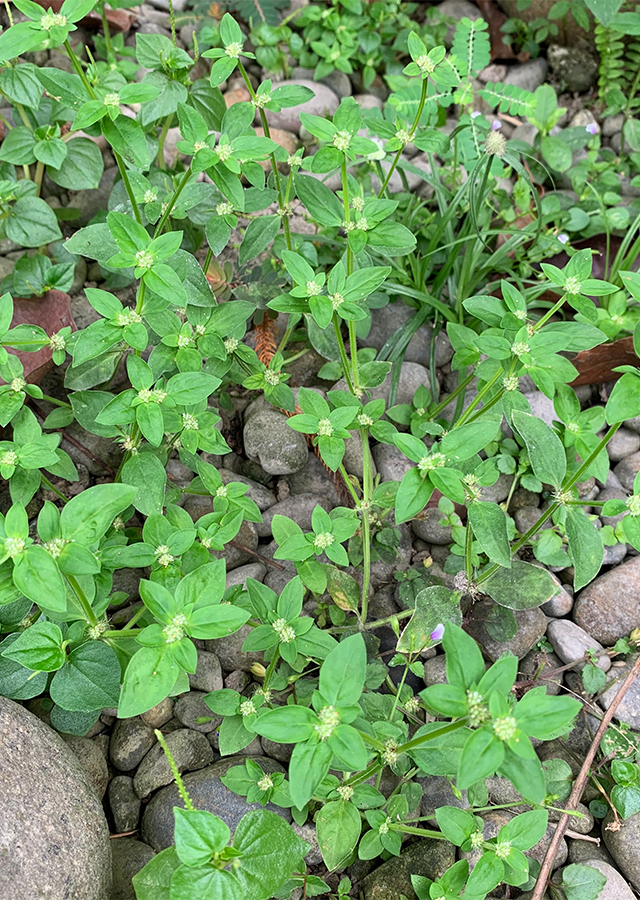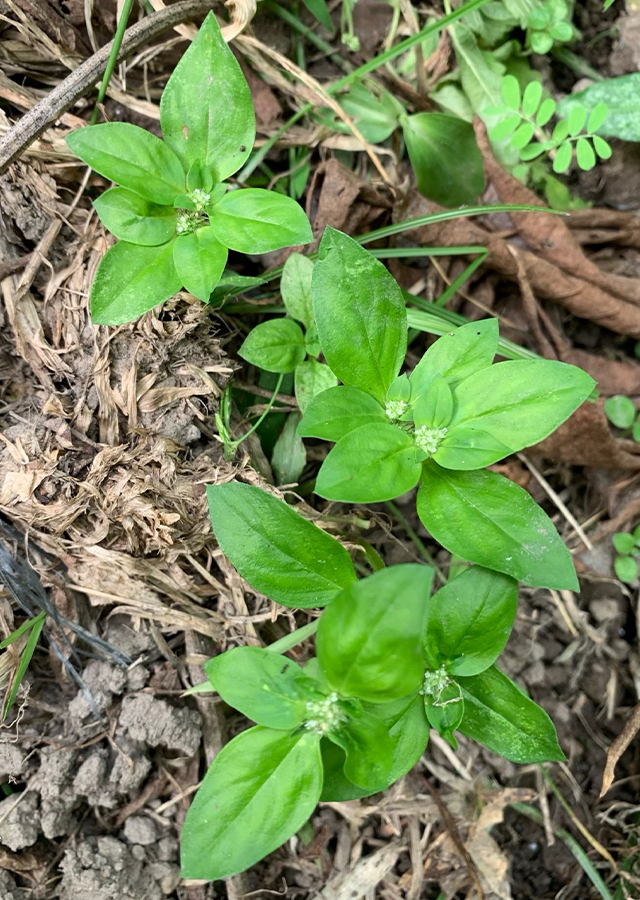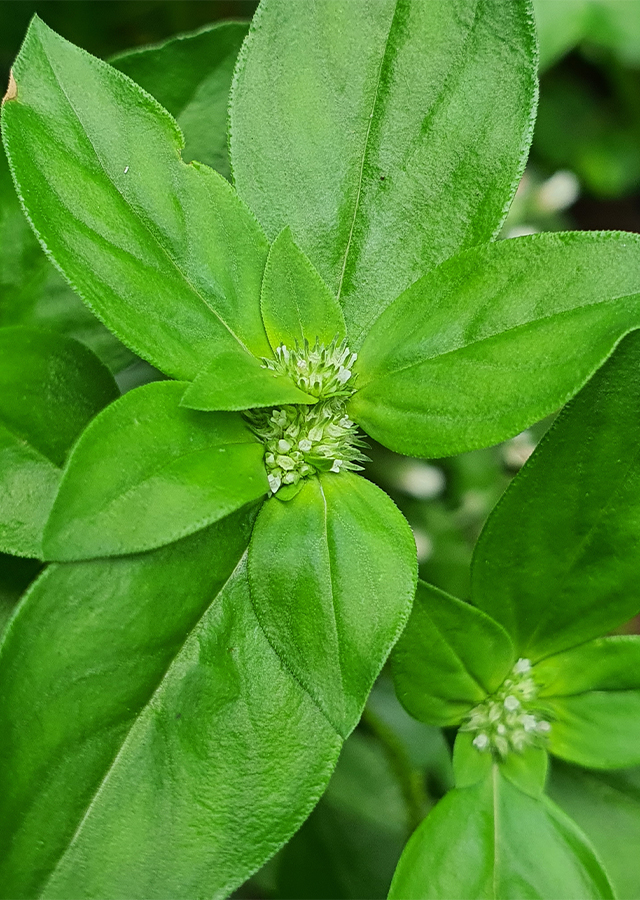Tropical Girdlepod
Mitracarpus hirtus (L.) DC.
Rubiaceae
Location in our garden
Principal



Synonym
Borreria ferruginea M.Martens & Galeotti
Borreria remotifolia DC.
Diodia villosa Moc. & Sessé ex DC.
Habitus
Herbaceous. An erect annual plant, herbaceous, grows up to 60 cm tall
Part Used
Leaves
Growing Requirements
Full Sunshine
Need Shade
Habitat
Coastal
Shrublands
Grassland
Overview
The plant has become naturalized as a weed in many areas of the tropics. Range in South America - Argentina, Paraguay, Uruguay, north to the Caribbean and through Central America to Mexico.
Vernacular Names
Agroecology
Usually a weed in waste or cultivated ground, it is sometimes in pastures, on open banks, or in thickets. Most commonly found at lower elevations, especially on the coastal plains, but can ascend to 1,900 metres in Guatemala.
Morphology
- Roots - a taproot system.
- Stems - 20-60 cm long, pubescent with scabrid hairs usually villous on the angles, quadrangular and covered with fine hairs.
- Leaves - elliptic to elliptic-lanceolate, adaxial surface scabrid to glabrous, abaxial surface glabrous except puberulenta long veins and usually scabrid near margins, subsessile, stipules 1-3 mm long.
- Flowers - dense axillary clusters, stipule-derived bracteoles filamentous, 1-2 mm long; calyx lobes 4, 2 of them oblong-lanceolate, with hyaline margins.
- Fruits - a dehiscent capsule, globular in shape. It is 2 mm long and surmounted by parts of the calyx. The line of dehiscence is located at the equator of the capsule. The capsule contains a seed in each loculus.
- Seeds - pale yellowish brown, ellipsoid-rectangular, compressed, 0.8-0.9 mm long.
Cultivation
Propagation is by seed.
Chemical Constituents
Alkaloids, tannins, cardiac gycosides, saponins, terpenoids, steroids, anthraquinones, flavonoids, phenols.
Traditional Medicinal Uses
- It has been reported to antimycotic, antioxidant, and antimicrobial.
- The leaf is used for eczema.
- The plant is an antidote for arrow poison.
- It has been traditionally used for the treatment of skin infections resulting from microbial contamination.
- In ethnomedicine, Mitracarpus species offer a wide range of applications, such as in the treatment of toothache, headache, dyspepsia, amenorrhea, venereal diseases, liver diseases, leprosy, wounds, burns, cuts, boils, eczema, mycosis, scabies, sore throat, respiratory diseases, hepatitis, jaundice, rashes, ringworm, inflammation, diabetes, and lice.
Part Used
Reference Sources
- Fern, Ken. (2019). Useful Trofpical Plants Database. Tropical Girdlepod. Mitracarpus hirtus. http://tropical.theferns.info/viewtropical.php?id=Mitracarpus+hirtus 18-08-2020.
- Weed Identification and Knowledge Mediterranean Areas (WIKTROP) Database. (No date). Mitracarpus hirtus (L.) DC. https://portal.wiktrop.org/species/show/214. 18-08 2020
- Science direct. (2021) Medicinal uses, phytochemistry, and pharmacological activities of Mitracarpus species (Rubiaceae): A review. Scientific African Vol. 11. https://www.sciencedirect.com/science/article/pii/S2468227620304294. 19-01-2021
